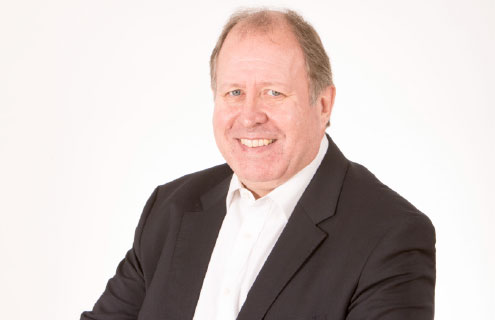Compre
As Solvency II continues to become embedded across Europe, Nick Steer of Compre predicts an increase in legacy business as owners seek to optimise the use of their own capital
How big is the current run-off market in Europe? And do you expect to see the market to increase?
Every year PwC release a survey, Discontinued Business in Europe, on the size of the non-life run-off market, in terms of liabilities. The latest report estimates the market currently stands at €247 billion. Although that is a large market, it is not all fully addressable by a legacy acquirer such as Compre. This is because some owners of run-off will deal with it themselves, but even if only 10 percent of that figure is addressable, it still creates a sizeable market—€25 billion is a large amount of liabilities to be available.
Whether that market grows in total, very much depends on how quickly the market deals with closing down the old liabilities and the size of any new liabilities. The overall size may remain very constant, but in my opinion, as Solvency II continues to become embedded across Europe, we could see an increase in legacy business for purchasers, such as ourselves, as the owners seek to optimise the use of their own capital.
Will demand for run-off services increase?
Run-off has grown over the years from being a fringe area to becoming an integral part of the whole insurance market. It is increasingly seen as a method whereby insurance and reinsurance companies and captives can manage their capital in an optimal way. At Compre, we are essentially a capital relief mechanism for active businesses.
Soft market conditions coupled with challenging investment returns, as well as Solvency II, which is highlighting the amount of capital supporting old business, means that owners of legacy business should be considering if that is the best use of their capital.
Whether companies chose to divest or not is entirely up to them, but at the very least they should be considering what to do about it. For anybody who owns legacy business, in my opinion, it is more prudent to utilise capital for future business, rather than supporting business from the past. It is more valuable to use the resources they have got, not least the people that they have got, to be focusing on future business instead of legacy business. We have got a very long track record in providing vendors optimal solutions for their older business. I think the market will grow and I think Compre is extremely well-placed to take advantage of that market.
After making 11 company acquisitions, what made Compre choose to acquire the Dublin-based captive insurer?
Our longer-term vision for the business is to be the leading European non-life legacy business consolidator, while our shorter-term aim to grow the net-tangible asset value of this business.
We aim to achieve our shorter-term goals by acquiring run-off business portfolios and creating value from those acquisitions.
Equinox CA Europe is our eleventh acquisition, and our first in Ireland, however, we have previously acquired 10 companies from other jurisdictions such as Finland, Germany, Sweden, Switzerland and the UK.
In addition to that, we have completed 13 business transfers, covering 24 individual insurance portfolios across Europe, most of them in Belgium, Denmark, France, Finland, Germany, Luxembourg, Norway, Sweden and the UK, so there is quite a breadth of markets that we deal in.
We acquire business from large well-respected counterparties including Allianz, Swiss Re, QBE, HSBC, Sampo Group and now SNC-Lavalin.
We acquired the Dublin-based captive as part of a competitive process that we were invited to participate in and we were successful in winning it.
The function of Equinox CA Europe was to insure SNC-Lavalin’s French business. SNC-Lavalin’s French operation was sold in December last year, so there was no longer a need to have a captive.
As a legacy specialist, what is your role and what are your objectives when acquiring a business in run-off?
From the vendor’s point of view, we give them full economic, operational and legal finality, while from the policyholder’s point of view, we will always pay valid claims, which we aim to settle more by negotiation rather than litigation.
From our own point of view, aside from the obvious profit incentive, it is important that we have a fair, but firm, claims handling policy that treats policyholders with respect.
As a result that enhances our reputation with the vendors, the policyholders, the regulators and also with the market in general.
For what reasons would a company put its captive into run-off?
The reasons business is put into run-off are quite common, and apply equally to insurance and reinsurance companies as captives.
A company can look at releasing capital to drive new business opportunities, it removes a certain drag that is caused by non-core legacy business, as well as any volatility and it provides companies with finality.
Longer-term claims can be difficult to understand, predict and manage. The captive or the owner may have operational challenges and that plus the added pressure of Solvency II on capital and operations, not least the increased reporting that companies now have to do under the directive, can create a compulsion to divest.
Do you know your next move in the market?
Watch this space—there is something in the pipeline. Compre is clearly open for business and if captives are looking to do anything with their legacy business please pick up the phone and give us a call.





